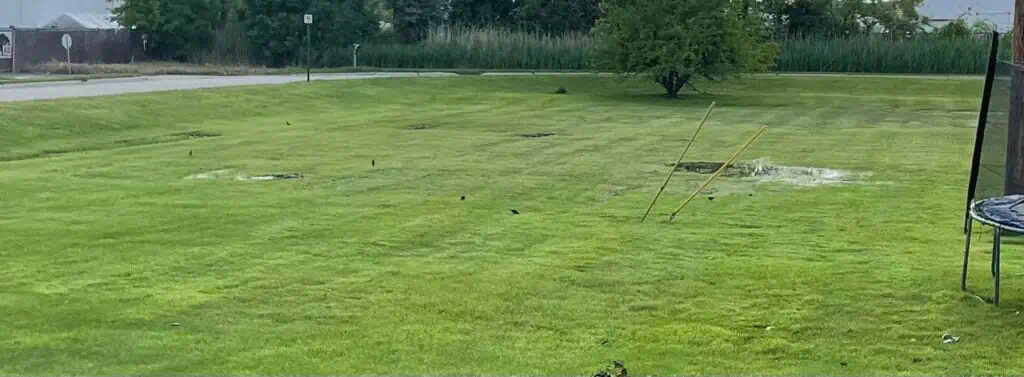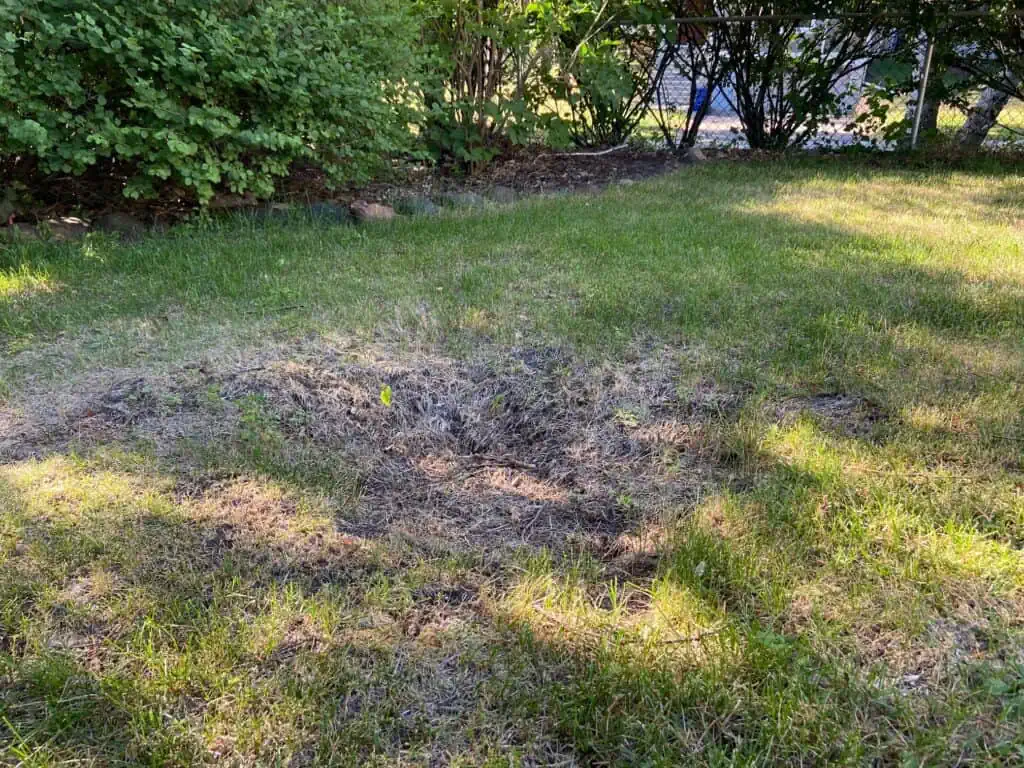What Causes Lawn Depressions?
Aesthetic lawns are the desire of many lawn owners. They make your environment more serene and healthy and add color to your property’s landscape. But while beautiful lawns are one thing, depressed lawns are another.
This information will shape your choice of therapy for your dying lawn, and thankfully, this article revolves around that!
What is Lawn Depression?
A depressed lawn is a lawn that has deviated from normal growth, is lumpy, and is very much unsmooth. And it is often a subject of worry for lawn owners who want their grass always leveled.

The issue of a depressed lawn can be more pronounced in locations with heavy clay soil, where pressures as extreme as those from a stream roller are required to flatten the lawn, and even this procedure is not a sure-fire solution.
But here is the fact; lumps, bumps, holes, and dips are inevitable developments on every lawn. The timing is the only difference because while these things can spring up on lawn A today, they might not surface on lawn B until tomorrow.
The basis of their development is diverse and can be multifaceted, so it makes sense to detect what exactly has caused depression on your lawn.
Causes of Lawn Depressions
Lawn depressions can result from various reasons, some of which we have highlighted below.
- Depression can happen during Spring; this is due to the uneven thawing of frozen, dense clay soil, which naturally results in the appearance of bumps. It heaves and bulges like a bundled carpet.
- Wild animals, such as voles and pets, sometimes dig holes in lawns. If your children are still little or you have children around, they can dig holes in the grass and make your lawn lumpy.
- If people or animals walk on your lawn when it is soft, is just emerging from extensive rains, or is in early spring; then depression is the result.
- Misusing certain home gardening equipment can also leave holes in your lawn, which ultimately causes depression. Heavy gadgets such as parked vehicles can also cause depression.
How to Fix a Bumpy Lawn
Fixing a bumpy lawn is rarely rocket science. At times, all you need to do is to fill the depressed soil back in and top up with not only topsoil that is rich but weed-free.

If the holes are small, you can rest assured that the existing grass will overwhelm the hole. If the holes are large, you can seed them or pat them with sod. What you should do first, upon detection of a depression on your lawn, is to find out the cause.
Proper treatment must include the termination of the cause first, then correcting the result. If the depressions on your lawn are only an inch or deeper, then the ideal approach will be to supplant the sod, treat the cause of the sinking, and backfill with new abundant soil to make for settling.
And do not worry; the removed sod does not have to go to the trash. It can be restored in place, provided it is still in good shape. And it can as well be replaced with either a new seed or sod.
A shallow depression is usually characteristic of a lumpy, bumpy lawn, less than an inch deep, and can be restored gradually by applying a top dressing. Compost-based mixes are handy supplements in this case.
Repairing a Lumpy Lawn
Many lawn owners associate depressed lawns with soil; meanwhile, it has nothing to do with it. A lawn is a collection of diverse layers; the soil, roots, blades, and thatch. Thatch is the portion superior to the soil and responsible for safeguarding the roots.
Ideally, it is roughly ¼ – 1 in the height of matted disintegrating grass clippings and usually withering old grass plants that give way to emerging ones.
The erosion of the bare area is furthered by rainfall, wind, and activity and leaves what is known as depression – an ugly contrast to a beautifully green and healthy lawn. The illusion of a bump is another description of it. It only has to grow in leaps and bounds, and your lawn is already bumpy; at least, this is how you will feel.
And if burrowing animals caused it, you know they should be eliminated from the lawn environment. By simply stepping on more minor bumps, you may be able to flatten them.
Signs of Lawn Depressions
Below are indications to look out for if you want to know whether your lawn is depressed.
- New cracks in the foundations of homes and buildings
- Cracks in the interior walls
- Cracks in the exterior ground
- Tipped over trees or fence posts
Level Lawn without Killing the Grass
You can level your lawn without killing the grass by:
- Topdressing with a leveling mix. If the depression on your lawn does not run deep, you can apply a thin layer of leveling mix.
- Eliminating a patch of the turf
- Gently compacting the soil.
Lawn depressions can cause a depressed lawn owner. We understand that bumps can be annoying intrusions on your beautiful green lawn, and if they are in your yard already, do not give up just yet!
All you need to do right now is to read this article and reclaim the color your lawn adds to your landscape. Enjoy!






